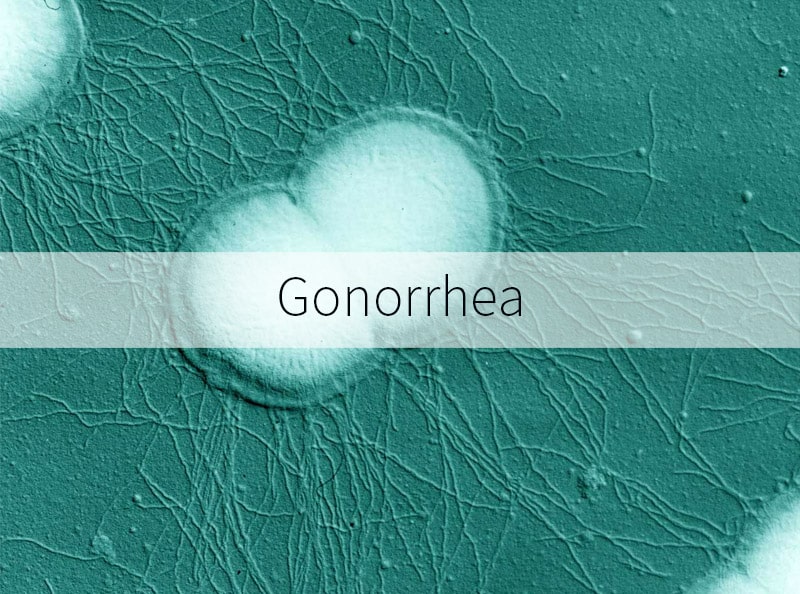Gonorrhea is a sexually transmitted disease (STD) caused by an infection with the bacterium called Neisseria gonorrhoeae. This infection, as the term implies, is transmitted through unprotected sexual intercourse, including oral, vaginal, and anal sexual intercourse. Gonorrhea tends to infect warm, moist areas of the body such as the urethra, vagina, the female reproductive system, eyes, etc. Approximately 800,000 Gonorrhea cases have been estimated to occur each year in the United States alone. Luckily, most countries offer a free-of-charge diagnosis and treatment. In the following, we will explain the major signs and symptoms of Gonorrhea to help you learn how to recognize them and ask for help as soon as possible.
Read More: Gonorrhea Overview
The characteristic symptoms of Gonorrhea
The first signs and symptoms of Gonorrhea are expected to occur within two to fourteen days after the exposure. The biggest problem with Gonorrhea is that many individuals never develop any noticeable symptoms, thus exposing themselves to the great risks that come with leaving the infection untreated. In fact, research from 1974 has revealed that approximately 43% of the participants had no noticeable symptoms at all. These individuals also pose a risk of spreading the infection even further, since they are unaware of being the so-called nonsymptomatic carriers.
- Symptoms in men
In men, the first symptom usually develops within the first week after exposure. In most cases, the first symptom is painful urination. As the infection progresses, other symptoms follow as well, including:
- Frequent urination;
- Urgency of urination;
- A pus-like discharge of the penis, with a characteristic green, white, or yellowish color;
- Swelling at the opening of the penis;
- Swelling and pain in one testicle;
- Persistent sore throat etc.
- Symptoms in women
It is common for most women to not experience any symptoms at all. And when they do, the symptoms variate from mild to more severe and commonly mimic the symptoms of other health problems, making it a real challenge to make an accurate diagnosis. In women, the most characteristic symptoms are:
- Painful urination;
- Frequent urination;
- Heavier menstrual periods;
- Vaginal bleeding in-between menstrual periods;
- Painful sexual intercourse;
- Vulvar swelling;
- Vaginal discharge, usually being watery or creamy, slightly greenish colored;
- Fever;
- Sharp abdominal pain;
- Persistent sore throat, etc.
If any of these symptoms are present, do consult a doctor as soon as possible. Gonorrhea is diagnosed by taking a swab and a blood sample that is later analyzed. Antibiotics will help relieve the present symptoms and improve your health. Because of the potential complications, Gonorrhea represents a health issue that needs to be treated as soon as possible.
Read More: Gonorrhea in the eye
Read More: Gonorrhea in the Anus and Rectum
Read More: Gonorrhea Testing and Diagnosis
Gonorrhea, which is a common STD, threatens to cause difficult complications, including ectopic pregnancy, infertility, and even damage to your brain and spinal cord, among others, if left untreated. It is of vital importance for anyone who practices unprotected sex to remember the symptoms of Gonorrhea and get regularly tested for this, and all of the other common STDs as a way to protect their health.
Product: Gonorrhea Test (Right Sign)
Product: Gonorrhea Test (One Step)
References
https://www.cdc.gov/std/gonorrhea/stdfact-gonorrhea.htm
http://www.intheknowzone.com/sexual-health-topics/gonorrhea/statistics.html
https://www.ncbi.nlm.nih.gov/pmc/articles/PMC1947122/
https://www.webmd.com/sexual-conditions/do-i-have-gonorrhea
https://www.plannedparenthood.org/learn/stds-hiv-safer-sex/gonorrhea/what-are-symptoms-gonorrhea

